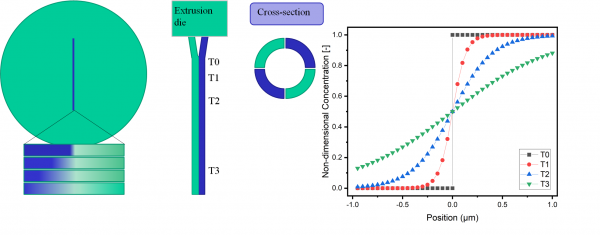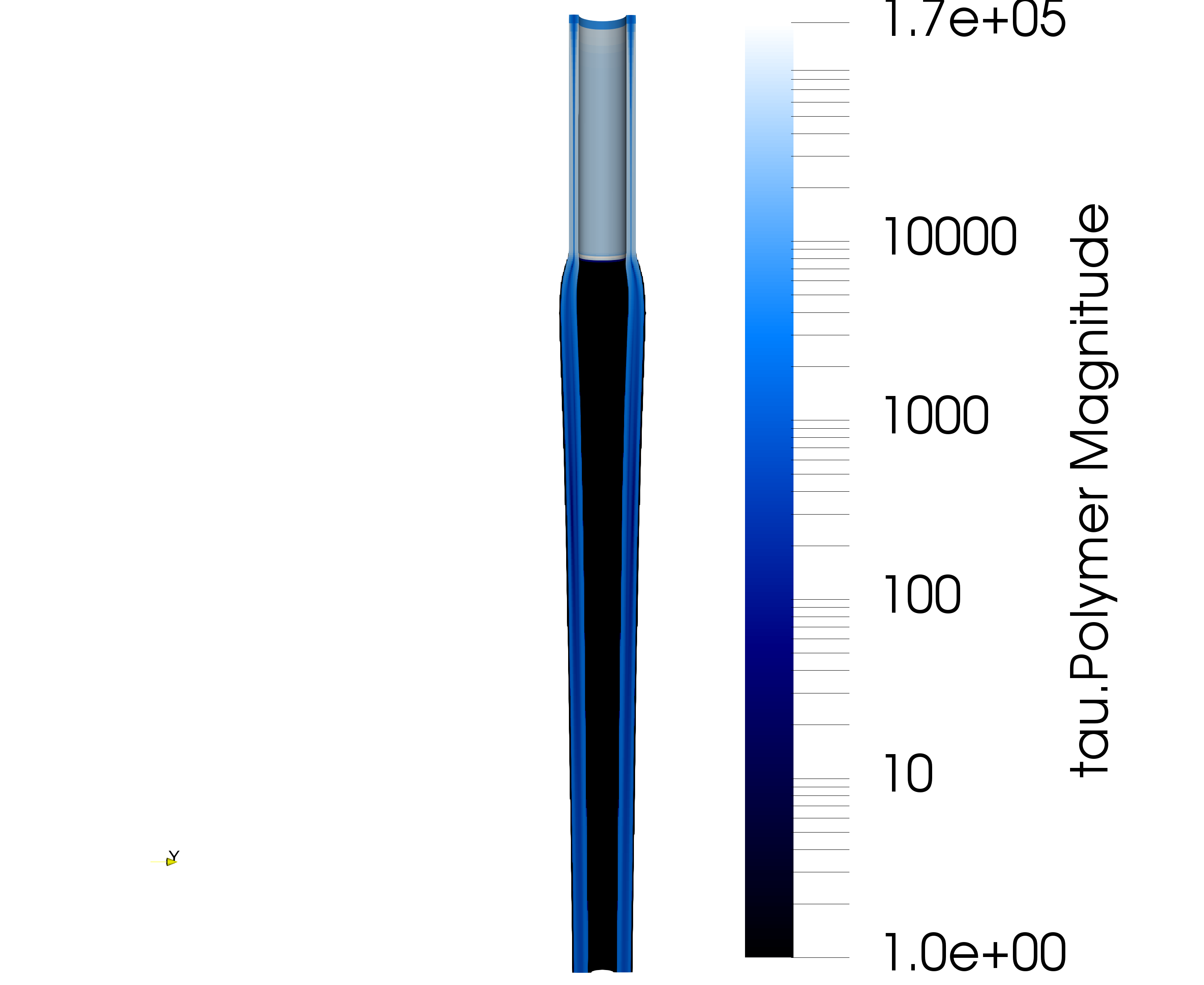Rheology and Tribology
Surface modification of polypropylene substrates and their impact on friction and wetting properties for hygiene applications
Researcher: Pallav Jani

My research aims to develop a fundamental understanding of the interactions between a model slip additive and surfactant finishes with varying hydrophilic-lipophilic balance and demonstrate the role of these interactions on the frictional and wetting behavior of the polymeric substrates. A typical design of hygiene products such as diapers and incontinence pads include an absorbent core sandwiched between an impermeable back-sheet below and a water permeable topsheet next to the skin. The topsheets are typically polypropylene nonwoven fabrics that are modified with slip additives to reduce friction and abrasion against the skin and are coated with hydrophilic surfactant finishes to provide one directional fluid permeability to the inherently hydrophobic polypropylene. The slip additive is added during the extrusion process and migrates over time to the surface of the polymer due to incompatibility, reducing the friction. Not much is known about the fundamental mechanism of friction reduction by a slip additive and how it would interact with a surfactant coating. These interactions can be either synergistic or antagonistic based on the molecular orientation and interactions at the surface between the slip additive and the surfactant. The project investigates these interactions.
Using fluid dynamics and interfacial studies to characterize the melt spinning of segmented hollow fibers
Researcher: Himendra Perera


My research involves the case of extruding segmented polymeric hollow fibers, which are dynamic systems where surface tension and viscoelasticity can alternate as dominant forces according to material properties and extrusion geometry. Using computational fluid dynamic simulations and rheological experiments, I will assess these interactions in the context of unconfined non-Newtonian flows in conjunction with the diffusion mechanics at the confluence of polymer melts. Eventually, I hope to generalize the processing regimes to combinations of nondimensional numbers which correspond to optimal extrusion conditions.
Ionic Liquids
Researcher: Kaitlin Glynn
I am interested in Ionic liquid bulk mechanics and ion transport in a polymer system. Ionic liquids are made up of large anions and cations that exist as a liquid at room temperature. They are known for their high conductivity and thermal stability which makes them a good option for green energy storage and transfer devices. However, when polymerized their conductivity decreases dramatically, limiting their application for solid state battery applications. My research aims to increase conductivity through alteration of mechanical properties in an ionic liquid matrix. I will be using rheology to measure these mechanical changes as well as electrochemical impedance spectroscopy to understand ion movement throughout the system.

